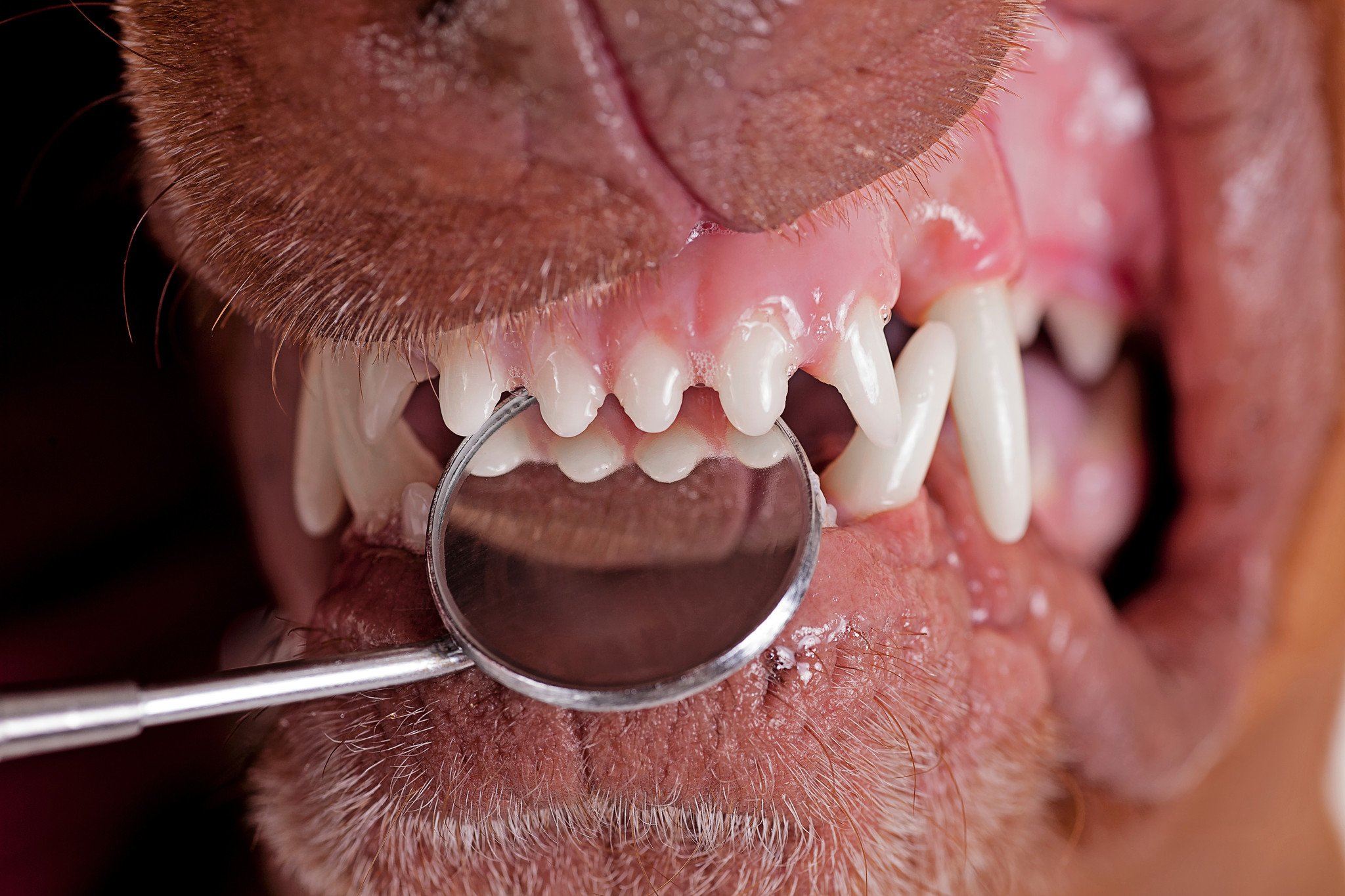Why Do Dogs Get Hairy Teeth?
- Posted on
- By Pet MD
- 0

One of the stranger things that you might see if you take a peek in your dog’s mouth is hair apparently growing out from under the gum tissue surrounding the teeth. What’s going on? Some sort of weird Frankenstein-like dental disease? Nope. Hairy teeth are actually a sign of skin problems in dogs.
One of the stranger things that you might see if you take a peek in your dog’s mouth is hair apparently growing out from under the gum tissue surrounding the teeth. What’s going on? Some sort of weird Frankenstein-like dental disease? Nope. Hairy teeth are actually a sign of skin problems in dogs.
Here’s how it works: When dogs are itchy, they chew on their skin. If the dog has short, coarse hair (think boxers, bulldogs, etc.), the hair shed by this chewing can easily become stuck under the gums, primarily around the incisor and canine teeth at the front of the mouth.
Even though this hair comes from the dog’s own body, the immune system sees it as potentially dangerous foreign material and attacks. The result is inflammation. In some dogs, the reaction is fairly minimal and doesn’t cause much damage, but for others, the inflammatory response is severe. Also, hair around the teeth traps food and bacteria under a dog’s gums—the perfect set up for infection. All of this causes the gums to recede away from the teeth, which is a hallmark of periodontal disease.
Periodontal disease is defined as “inflammation and destruction of the tissues surrounding the teeth.” This includes gum tissue, cementum (a calcified substance over the roots of teeth), periodontal ligaments that attach teeth to the jaw bone, and the alveolar bone of the jaw itself.
Left untreated, periodontal disease is painful and will eventually lead to tooth loss. Periodontal disease can also lead to infections elsewhere in the body. The bacteria in the mouth can get into the blood vessels in the gingival tissue and travel to other sites in the body to set up infections. Possible locations include the heart valves, lungs, liver, and kidneys.
Periodontal disease can be treated by your veterinarian. He or she will anesthetize your dog, thoroughly examine and clean all of your dog’s teeth (including removing the hair), and possibly take dental x-rays to look at deeper structures. Severely damaged teeth will need to be removed.
Preventing the return of periodontal disease caused by hair requires a two-step approach:
- Deal with the problem that is making the dog itch. Flea bites, mange mites, and allergies to triggers like pollen, mold, or ingredients in food are commonly to blame. A veterinary physical exam can identify some causes of itchy skin, but diagnostic tests such as skin scrapings for mange mites, cytology to rule out infections, a fungal culture for ringworm, or allergy testing may also be required.
- Remove any hair that becomes lodged around the teeth before it does too much damage. Firmly wiping the hair away with a cotton swab can work, but toothbrushing on a daily basis is even better, since it will also help prevent the buildup of plaque and tartar that is another leading cause of periodontal disease.
Resources
Dictionary of Veterinary Terms: Vet-speak Deciphered for the Non-Veterinarian. Coates J. Alpine Publications. 2007.
Subgingival hair: An embedded predicament. Jan Bellows. DVM360. Dec. 19, 2012.
Comments
Be the first to comment...